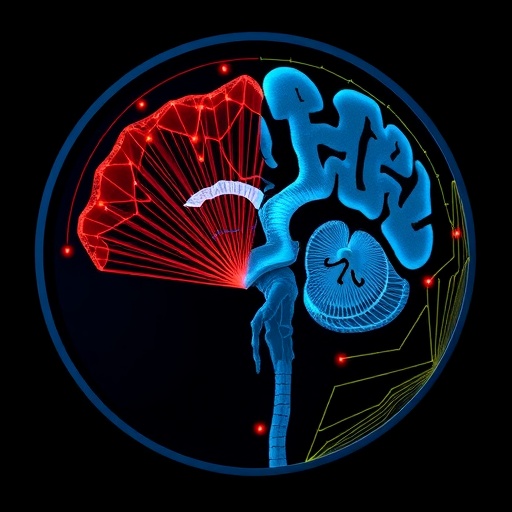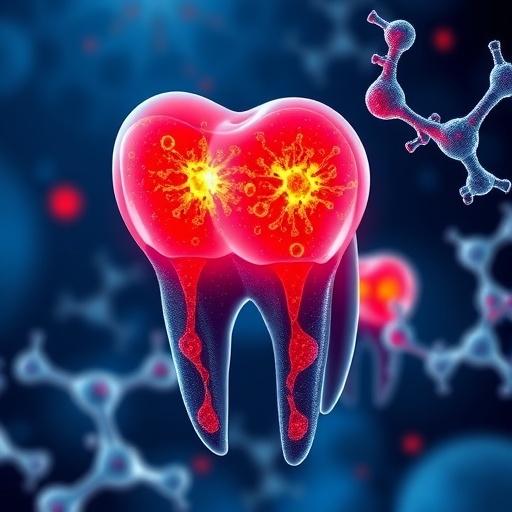In the rapidly evolving landscape of medical imaging, the integration of distributed learning models has offered unprecedented potential for diagnostics, personalized medicine, and large-scale epidemiological studies. However, the promise of these technologies often grapples with a fundamental challenge: data heterogeneity. Medical imaging data amassed from diverse institutions, regions, and devices present significant variability in format, quality, and underlying patient demographics, which substantially hinders the development of robust, generalizable AI models. Addressing this hurdle head-on, a pioneering study by Hu, Li, Lin, and colleagues introduces an innovative approach termed “heterosync learning,” marking a monumental stride toward harmonizing heterogeneous datasets across distributed medical imaging systems.
Heterogeneity in medical imaging datasets is not merely a technical nuance; it encapsulates the complex intersection of institutional protocols, hardware differences, and demographic variations that each uniquely shape the imaging outputs. Traditional centralized methods, where data is aggregated into a single repository for model training, often falter due to privacy concerns and logistical impracticalities. Federated learning frameworks emerged as a decentralized solution, enabling multiple entities to collaboratively train AI models while retaining data locally. Yet, these federated systems encounter their own limitations when confronted with heterogeneity; simple aggregation and uniform model updates struggle to reconcile the disparities in data distributions across nodes, resulting in diminished performance and bias.
The newly introduced heterosync learning paradigm is a sophisticated evolution of federated learning that explicitly accounts for cross-site heterogeneity instead of attempting to eliminate or ignore it. By dynamically aligning feature representations and model parameters according to site-specific distributions and synchronization strategies, heterosync learning enhances collaboration without compromising the unique characteristics of each local dataset. This nuanced synchronization is designed to maximize efficiency and learning capacity, ensuring that the models can generalize well while respecting individual institutional particularities.
Critical to the heterosync framework is its dual-layer design comprising localized adaptation and global synchronization. Locally, each site modulates its model updates to fit unique data nuances, employing advanced normalization and feature alignment techniques grounded in state-of-the-art deep learning architectures. Globally, a carefully constructed synchronization protocol iterates over these adjusted models, merging their insights in a way that leverages complementary information without succumbing to data drift or overfitting. The researchers emphasize that this balance between autonomy and collaboration is essential to overcoming the entrenched barriers posed by heterogeneity.
The research team rigorously validated heterosync learning across multiple medical imaging modalities, including MRI, CT, and X-ray datasets originating from geographically and technologically diverse institutions. The performance metrics demonstrate a substantial uplift compared to both traditional federated learning and centralized training models. More strikingly, the approach yields increased robustness against domain shifts, which are frequent in real-world clinical environments where imaging protocols and patient populations fluctuate unpredictably.
Beyond performance, heterosync learning embodies a paradigm shift in ethical AI deployment within healthcare. By enabling cross-institutional collaboration without necessitating patient data sharing, the model addresses privacy concerns deeply embedded in healthcare regulations such as HIPAA and GDPR. This privacy-preserving collaboration has immense implications for accelerating AI development and clinical adoption, particularly for rare diseases and underrepresented populations where data scarcity and heterogeneity have been primary obstacles.
One of the standout features of heterosync learning is its adaptability and scalability. The framework is designed to seamlessly incorporate new institutions and data modalities, a crucial requisite as medical imaging technology continues to diversify and evolve. This design foresight ensures that the benefits of the research extend well beyond initial implementations, potentially catalyzing a globally interconnected ecosystem of AI-powered diagnostic tools resilient to heterogeneity challenges.
The implications of this study reach far beyond the immediate realm of medical imaging. Heterosync learning’s principles and methodologies can be adapted to any domain marked by distributed, heterogeneous data landscapes. Potential applications may include genomics, wearable health technology, and even non-medical fields such as autonomous driving and environmental sensing, where variability in data sources profoundly impacts model reliability and accuracy.
Technically, heterosync learning advances the state-of-the-art through innovative algorithmic contributions. It integrates domain-adaptive normalization layers, adaptive optimization strategies, and a novel synchronization protocol that modulates the influence of local models based on their estimated domain similarity. This granular control mechanism prevents dominant datasets from skewing the global model while ensuring that smaller sites still contribute meaningfully, circumventing a common pitfall in federated learning known as client drift.
The researchers also employed rigorous theoretical analysis to support the framework’s convergence properties, providing guarantees around stability and fairness that are often missing in federated learning literature. This theoretical grounding bolsters confidence in deploying heterosync learning in critical medical scenarios where model reliability is paramount.
The experimental design encompassed diverse data heterogeneity types, including differences in scanner vendors, imaging protocols, and patient demographics. These multifaceted tests underscore the method’s resilience and provide a comprehensive basis for clinical adoption. The study also features extensive ablation experiments that elucidate the contribution of each component within the heterosync framework, offering a transparent blueprint for replication and further innovation.
Looking forward, the study’s authors envision integrating heterosync learning with emerging AI interpretability tools to enhance clinical trust and adoption. They also propose expanding the method to federated multi-task learning environments, where different institutions may have varied but related diagnostic objectives. This evolution promises to further harness heterogeneity as a source of richness rather than a hindrance.
The impact of this research resonates amidst a broader movement toward democratizing AI in healthcare. Initiatives like heterosync learning highlight the critical balance between innovation, ethics, and practical deployment challenges. By addressing data heterogeneity—a central bottleneck encountered worldwide—this method lays the groundwork for more equitable and accurate AI systems that can benefit healthcare systems globally.
Moreover, the study marks a notable example of interdisciplinary collaboration, blending expertise in machine learning, medical imaging, data privacy, and clinical practice. This synthesis is vital for creating tools that not only perform technically but also align with the realities and necessities of clinical workflows and patient care.
In conclusion, the introduction of heterosync learning represents a catalytic advance toward harnessing the full potential of distributed medical imaging data. By cleverly embracing heterogeneity rather than attempting to suppress it, the researchers deliver a robust, privacy-preserving framework capable of improving diagnostic AI while respecting the complexity of real-world clinical data. As healthcare continues to digitalize and decentralize, such innovations will doubtlessly play a pivotal role in shaping the next generation of medical AI technologies.
The findings presented by Hu et al. signal a transformative shift toward more inclusive, adaptable, and trustworthy AI methodologies in medicine. Their work not only confronts a key technical challenge but also charts a path for future explorations where the interplay between data diversity and machine intelligence can be harnessed to drive better health outcomes worldwide.
Subject of Research: Data heterogeneity challenges and distributed learning in medical imaging.
Article Title: Addressing data heterogeneity in distributed medical imaging with heterosync learning.
Article References:
Hu, HT., Li, MD., Lin, XX. et al. Addressing data heterogeneity in distributed medical imaging with heterosync learning. Nat Commun 16, 9416 (2025). https://doi.org/10.1038/s41467-025-64459-y
Image Credits: AI Generated
Tags: addressing data heterogeneity in medical imagingdemographic variations in imaging outputsdistributed learning models in diagnosticsfederated learning challenges in AIharmonizing heterogeneous datasets in healthcareheterosync learning in healthcareimproving AI model generalizabilityinstitutional protocols in medical imaginglarge-scale epidemiological studies using AImedical imaging data gapspersonalized medicine and medical imagingprivacy concerns in medical data sharing





